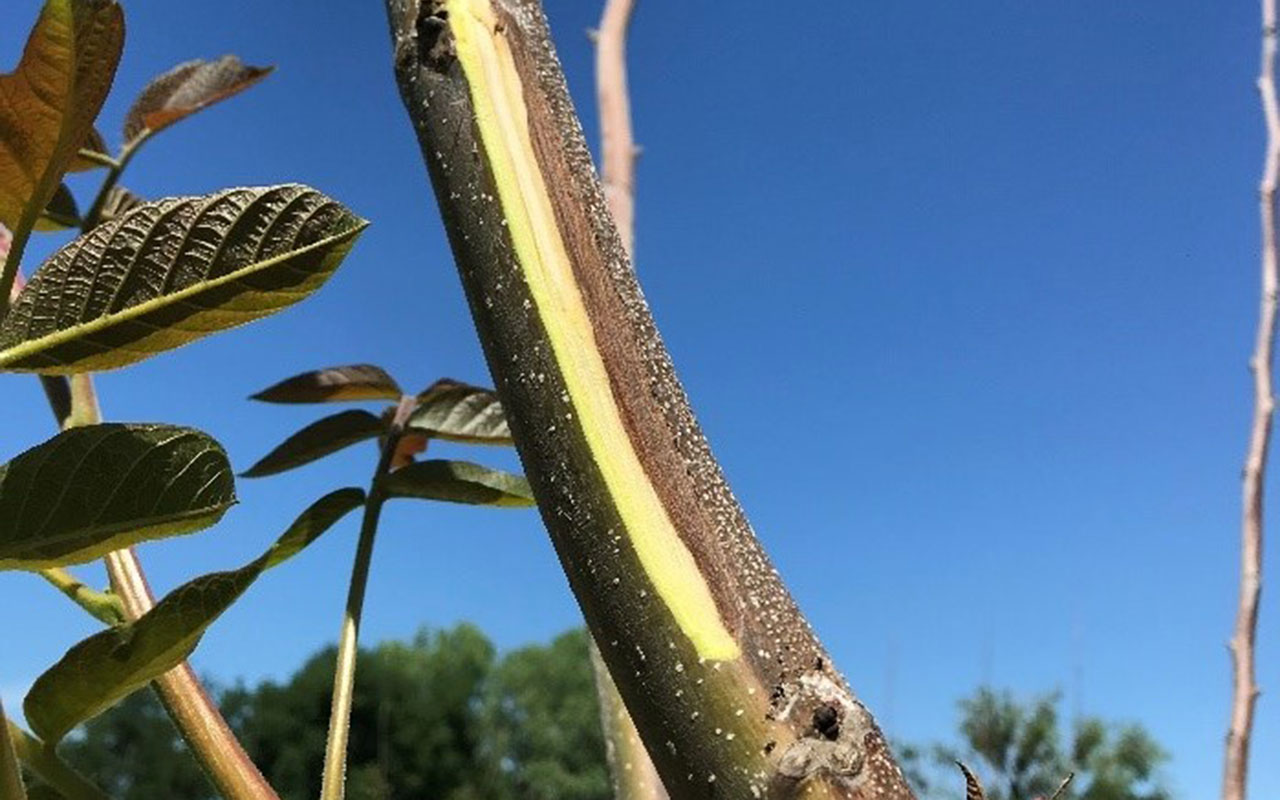
No leaf out of some walnut orchards last spring after the 2018 November freeze caused grower concern, but the trees are beginning to recover, said University of California Cooperative Extension (UCCE) orchard stems advisor Luke Milliron.
In his Sac Valley Orchards newsletter Milliron said the sudden November 2018 freeze event that caused extensive damage in many walnut orchards is a reminder to prepare against extreme weather events.
Milliron, who works with walnut growers in Butte, Glenn and Tehama counties, said the trees’ regrowth later in the spring from dormant buds showed that many trees will be able to recover over time. There is dead wood visible and it is being cut out, he said, but some affected trees experienced tremendous canopy regrowth over the growing season.
Milliron did see some trees that were collapsing late in the season and not recovering. This handful of trees had waterlogging or Phytophthora type symptoms, likely due in part to wet late spring rains. Because freeze affected orchards have less canopy, irrigation and fertilizer levels should be cut back appropriately.
The reason for the lack of leaf out is known: the wood and buds are dead. The regrowth was from adventitious or dormant buds that broke from potions of the tree with living wood. These buds are the tree’s mechanism for recovery from extreme damage.
To reduce or prevent freeze damage to young walnut trees, Milliron said irrigation should be withdrawn in early September until a terminal bud has set to keep trees from pushing new growth into autumn. After the terminal has set, irrigation can be resumed to avoid tree stress and defoliation.
Irrigate if there has not been adequate rainfall by the end of October. Both young and mature orchards should have soil moisture going into November. Adequacy of rainfall can be determined by comparing rainfall totals with evapotranspiration (ET) and monitoring soil moisture levels. Adequate soil moisture will help trees withstand low temperatures as water conducts and stores more heat than air spaces in the soil.
Three to five days prior to a freeze, the soil should be wetted to fill the air spaces with water. The top 12 inches is the most important and should be at field capacity. Water on the soil surface should be avoided since it will freeze over and prevent heat from being released from the soil back out towards the tree canopy.
If freeze damage is suspected in the fall or winter, check the tree tissue for drying or browning. Sunburn following freeze damage can cause more damage on the southwest side of the tree. That area should be painted with a 50-50 water and interior latex paint mix. Painting up to a week after a freeze event can decrease damage.

Cecilia Parsons
Cecilia Parsons has lived in the Central Valley community of Ducor since 1976, covering agriculture for numerous agricultural publications over the years. She has found and nurtured many wonderful and helpful contacts in the ag community, including the UCCE advisors, allowing for news coverage that focuses on the basics of food production.
She is always on the search for new ag topics that can help growers and processors in the San Joaquin Valley improve their bottom line.
In her free time, Cecilia rides her horse, Holly in ranch versatility shows and raises registered Shetland sheep which she exhibits at county and state fairs during the summer.















